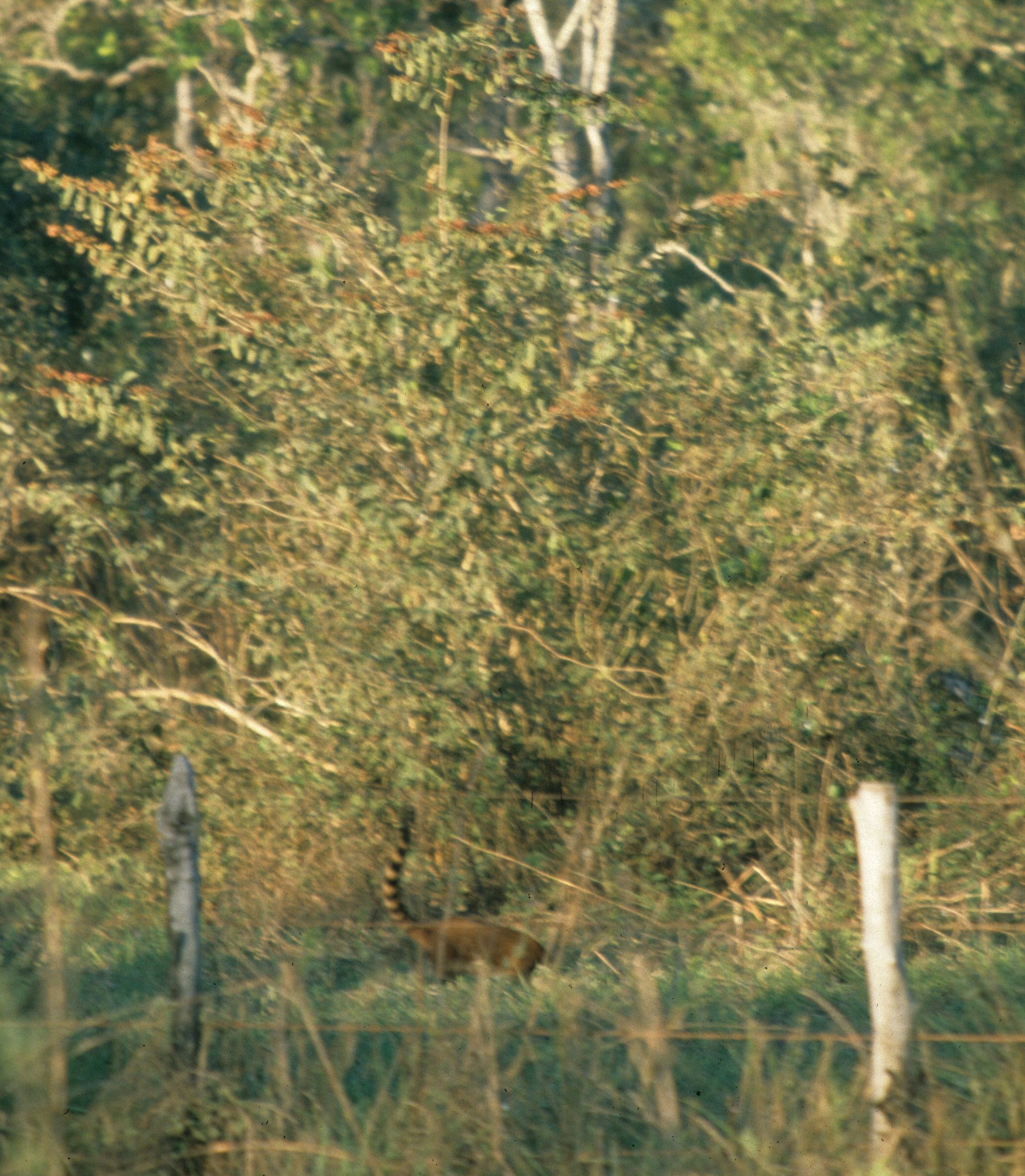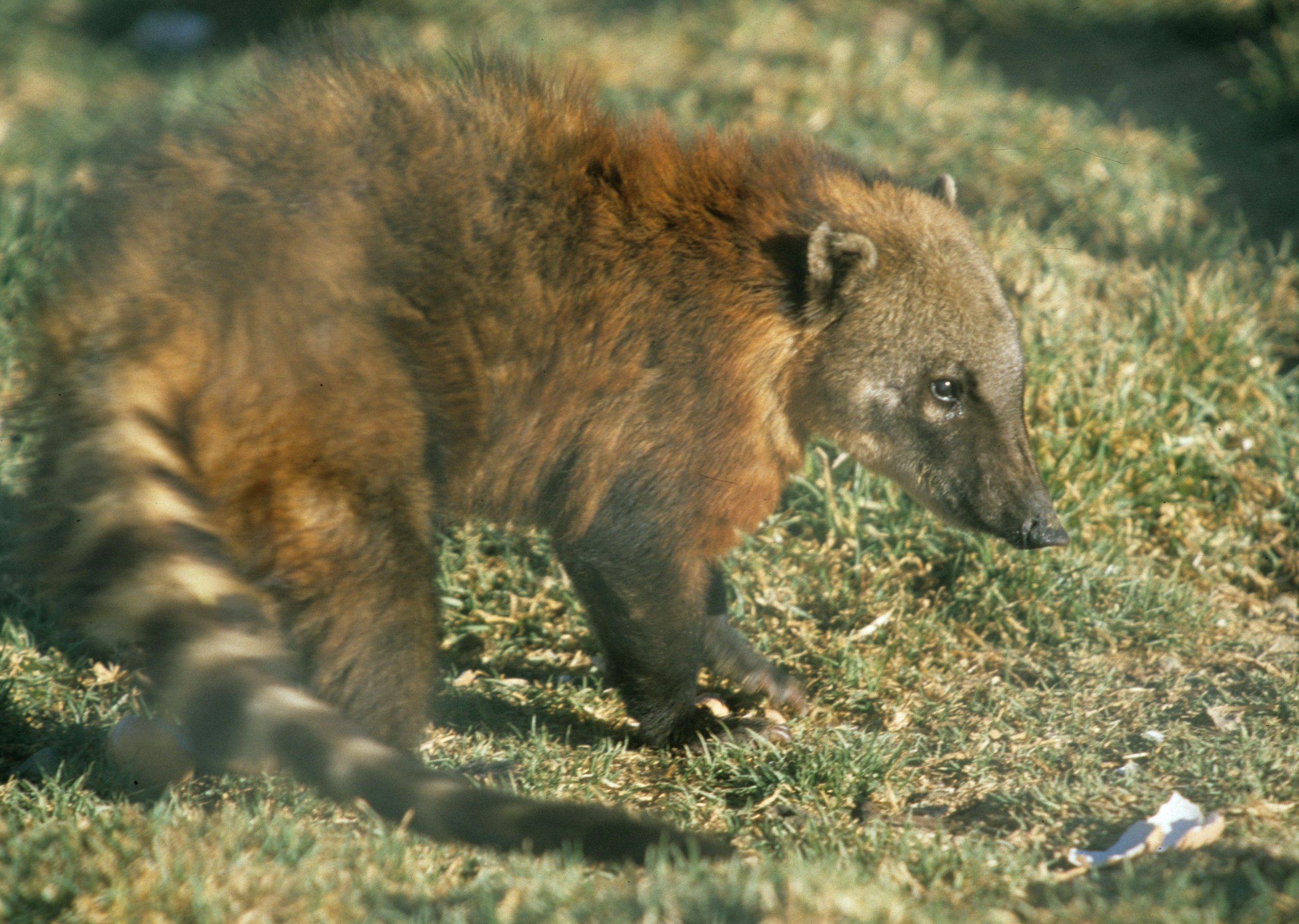
South American Coati (Nasua nasua)
The South American Coati (Nasua nasua), also known as the ring-tailed coati, is a coati species and a member of the raccoon family (Procyonidae), found in the tropical and subtropical parts of South America.[4] An adult generally weighs from 2–7.2 kg (4.4–15.9 lb) and is 85–113 cm (33–44 in) long, with half of that being its tail. Its color is highly variable and the rings on the tail may be only somewhat visible, but its most dstinguishing characteristic is that it lacks the largely white snout (or "nose") of its northern relative, the white-nosed coati.
The South American coati is widespread in tropical and subtropical South America. It occurs in the lowland forests east of the Andes as high as 2,500 m (8,200 ft) from Colombia and The Guianas south to Uruguay and northern Argentina. Nasua nasua occupancy is significantly and negatively related to elevation but positively related to forest cover.
It has been recorded in west Ecuador, and north and west Colombia. In Argentina, it has been recorded in Santa Fe and Salta Provinces.
The only documented records of white-nosed coati in South America are from far northwestern Colombia, in the Gulf of Urabá region, near the Colombian border with Panama. The smaller mountain coati lives foremost at altitudes above the South American coati, but there is considerable overlap.
In Europe, this species has been included since 2016 in the list of Invasive Alien Species of Union concern (the Union list). This implies that this species cannot be imported, bred, transported, commercialized, or intentionally released into the environment in the whole of the European Union.
South American coatis are variable in color and can—among others—be almost black or orange-red
South American coatis are diurnal animals, and live both on the ground and in trees. They are omnivorous but primarily eat fruit, invertebrates, other small animals, and bird eggs. Also, they search for fruit in trees high in the canopy and use their snouts to poke through crevices to find animal prey on the ground. Furthermore, they also search for animal prey by turning over rocks on the ground or ripping open logs with their claws.
Females typically live in large groups, called bands, consisting of 15 to 30 animals. Males are usually solitary. Solitary males were originally considered a separate species due to their different social habits and were called "coatimundis", a term still sometimes used today. Neither bands of females nor solitary males defend a unique territory, and territories therefore overlap.
Group members can produce soft whining sounds, but alarm calls are different, consisting of loud woofs and clicks. Coatis typically sleep in the trees. When an alarm call is sounded, they climb trees, and then drop down to the ground and disperse. Predators of the South American coati include foxes, jaguars, jaguarundis, and occasionally humans.
South American Coati (Nasua nasua) photographed in Pousada Aguape in the Northern Pantanal








































































































South American Coati (Nasua nasua) photographed in Una Biological Reserve near Ilheus, Bahia do Sul














South American Coati (Nasua nasua) photographed in Alfonso Claudio, Espirito Santo















South American Coati (Nasua nasua) photographed in Vale Biologica Reserve


The below images are of coati photographed in South America on previous expeditions:

Pantanal, 1995

Bolivian Chaco, 1995

Bolivian Chaco, 1995

Kapawi, Ecuador 2001

Kapawi, Ecuador 2001
